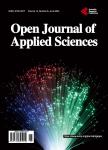Comparison of Deep Learning Architectures for Late Blight and Early Blight Disease Detection on Potatoes
Comparison of Deep Learning Architectures for Late Blight and Early Blight Disease Detection on Potatoes作者机构:Department of Mechatronics Engineering Jomo Kenyatta University of Agriculture and Technology Nairobi Kenya Department of Horticulture Jomo Kenyatta University of Agriculture and Technology Nairobi Kenya
出 版 物:《Open Journal of Applied Sciences》 (应用科学(英文))
年 卷 期:2022年第12卷第5期
页 面:723-743页
学科分类:1002[医学-临床医学] 100214[医学-肿瘤学] 10[医学]
主 题:Image Classification Convolutional Neural Networks Transfer Learning Hyperparameters
摘 要:Potato late blight and early blight are common hazards to the long-term production of potatoes, impacting many farmers around the world, particularly in Africa. Early detection and treatment of the potato blight disease are critical for promoting healthy potato plant growth and ensuring adequate supply and food security for the fast-growing population. As a result, machine-driven disease detection systems may be able to overcome the constraints of traditional leaf disease diagnosis procedures, which are generally time-consuming, inaccurate, and costly. Convolutional Neural Networks (CNNs) have been shown to be effective in a variety of agricultural applications. CNNs have been shown to be helpful in detecting disease in plants because of their capacity to analyze vast volumes of data quickly and reliably. However, the method hasn’t been widely used in the detection of potato late blight and early blight diseases, which reduce yields significantly. The goal of this study was to compare six cutting-edge CNN architectural models, taking into account transfer learning for training and four hyperparameters. The CNN architectures evaluated were AlexNet, GoogleNet, SqueezeNet, DenseNet121, EfficientNet b7, and VGG19. Likewise, the hyperparameters analyzed were the number of epochs, the batch size, the optimizer, and the learning rate. An open-source dataset containing 4082 images was used. The DenseNet121 architecture with a batch of 32 and a Stochastic Gradient Descent (SGD) optimizer with a learning rate of 0.01 produced the best performance, with an accuracy of 98.34% and a 97.37% f1-score. The DenseNet121 model was shown to be useful in developing computer vision systems that aid farmers in improving their disease management systems for potato cultivation.



